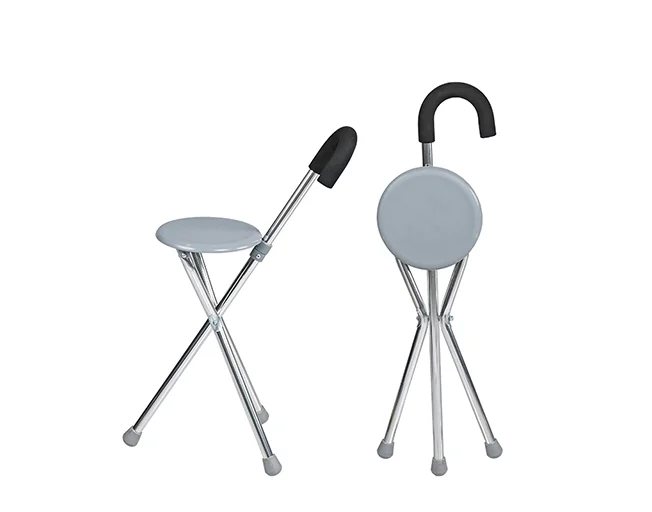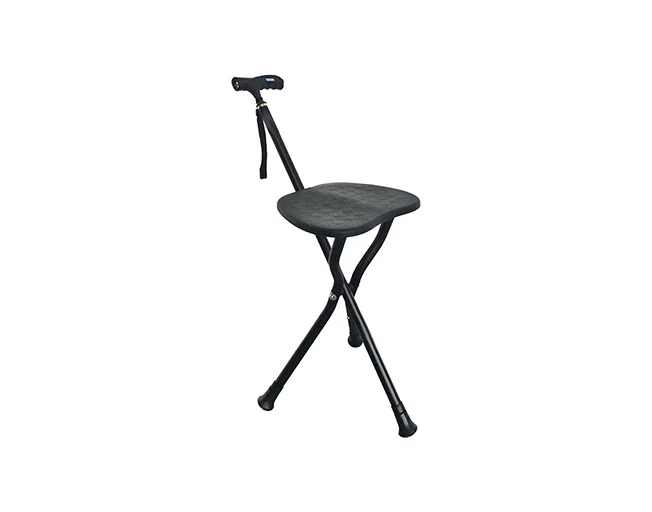What Factors Should Experts Consider When Choosing a Crutch Cane?
Time : Aug 21, 2025 View : 1,624
Selecting the perfect crutch cane is all about matching it to what someone really needs—how they move, their day-to-day life, that kind of thing. It’s not just picking up some random stick. It’s about making it easier to get around, keeping things comfortable, and giving a little boost to their confidence. Let’s break down the key stuff experts look at to get it just right.

Clinical Assessment and User Needs
A solid understanding of a person’s mobility challenges sets the foundation for selecting the right cane. Experts assess everything from injury type to daily demands to find the perfect match. Here’s how they break it down.
- Evaluating Patient Mobility Requirements: Choosing a crutch cane kicks off with sorting out how much support someone needs to move around. Got surgery recovery on your plate, a chronic condition, or just feeling a bit shaky as you age? Your mobility level runs the show. A basic cane could be enough for minor balance hiccups. But if you’re wobbling big time or feeling weak, you’ll want something tougher to keep you steady and moving without a stumble. The type of injury shapes what kind of support you need. Let’s look at how that plays out.
- Considering Weight-Bearing Capacity and Injury Type: The kind of injury you’ve got decides how much weight you can put on it. Got a leg that can’t take any pressure? Forearm or underarm crutches are your go-to, shifting all the load off that limb. If you can handle some weight, a well-designed cane spreads the effort across your arms and shoulders. Matching the cane to your injury and strength keeps you safe and helps you heal without extra strain.
- Differentiating Between Temporary and Long-Term Use: Short-term needs call for canes that adjust easily and tuck away when you’re done. For long haul use, though, comfort and toughness matter most. If you’re relying on a cane day in, day out, go for one with fancy grips or durable builds to keep up with your life’s changes.
Ergonomic Design and User Comfort
Comfort is everything when you’re using a cane for hours on end. From the grip to the height, every detail impacts how it feels to move. Let’s explore the design features that keep users at ease.
- Importance of Handle Design for Hand and Wrist Support: Gripping a cane for hours can tire out your hands. A comfy, curved handle spreads the pressure across your palm, easing up on wrist aches—super important if you’ve got arthritis or carpal tunnel nagging you. Getting the right height is just as critical for staying comfortable. Here’s how it helps.
- Height Adjustability for Optimal Posture: A cane that’s the wrong height makes you slouch or stretch awkwardly, and that’s a recipe for sore muscles. Adjustable canes let you stand tall, keeping your spine happy and your arms relaxed. Some canes go further to soften the impact of walking. Let’s see how that works.
- Shock Absorption and Vibration Dampening: Some high-end canes have built-in shock absorbers in the shaft or tip, softening the jolt on your joints when you’re walking on hard floors. It’s a game-changer for long walks, keeping things comfy.
Key Factors in Selecting a Crutch Cane
The material of a cane affects both its feel and its lifespan. Choosing the right one depends on how it’s used and where. Let’s compare the options and their staying power. A cane isn’t just a tool—it’s part of your daily routine and style. Looks and portability can make it feel like an extension of you.
- Material Composition and Durability: The stuff a cane’s made of affects how it feels and holds up. Aluminum is light but strong, great for most folks. Carbon fiber’s even lighter and tougher, though it’ll cost you more—perfect for active types needing a cane long-term. Steel’s a beast for heavy-duty use but weighs a ton, so it’s mostly for bariatric models. Keeping a cane in good shape, especially outdoors, is another key piece. If you’re out in the rain or humid spots a lot, rust is the enemy. Anodized aluminum or powder-coated steel shrugs off corrosion, meaning less fuss to keep your cane in tip-top shape.
- Aesthetic and Lifestyle Considerations: Looks matter more than you’d think. A cane’s part of your daily vibe, so picking one with a sleek finish or cool color helps it feel less like a medical tool and more like your style. XUNYU adds some flair to their canes. XUNYU’s XY910 and XY911 blend practical support with a sharp, modern look, so you feel good using them without that “hospital gear” vibe. A foldable cane’s a lifesaver, easy to stash and carry without skimping on sturdiness. Lightweight aluminum ones are especially handy for commuters or travelers.


Regulatory Compliance and Safety Standards
Safety is the backbone of any good cane, and certifications prove it’s up to the task. Let’s look at what standards ensure reliability.
Safety’s non-negotiable. Pick canes that meet global standards like CE in Europe, FDA in the U.S., or ISO worldwide—they’ve been tested to handle real-world use without failing you. Foshan Xunyu Medical Technology Co., Ltd. makes sure its crutches hit CE, FDA, and ISO marks, so you know they’re safe and reliable no matter where you are.
Integration With Rehabilitation Protocols
A good cane should support your recovery journey, not just your steps. Here’s how they fit into rehab plans.
Canes should play nice with your rehab goals, like retraining your walk or building muscle. Adjustable models let therapists tweak your posture as you recover, and swappable parts keep up with your progress.
Expert Recommendations Based on Use Scenarios
Different situations call for different canes, from post-surgery recovery to lifelong support. Let’s break down the best picks for specific needs. After surgery, you need a cane that’s light but steady, easing pressure while you get back on your feet. Adjustable aluminum ones with cushy grips cut down on discomfort during long recovery days. Older users have their own set of needs. Here’s what works best for them. Older folks need canes that fight fatigue and boost balance. Tough frames with quad bases are perfect for daily use, keeping things comfy and reliable as you age.
XUNYU has options tailored for seniors. Let’s check out their offerings. XUNYU’s lineup has crutches built for seniors, blending durability with light weight and a touch of style for everyday confidence. Some conditions require extra stability. Here’s what
If you’ve got shaky muscles or neurological issues, go for wide-based canes with grippy handles and strong shafts. They keep you steady during therapy or daily walks.
Customization and Patient Feedback Loop
Personalizing a cane ensures it fits like a glove, and user input is key to getting it right. Let’s see how customization and feedback shape the process. Trying out canes before committing helps match the grip and base to how your body moves. It’s the best way to find the perfect fit for you.
XUNYU uses real-world feedback to keep improving. Here’s their approach. Foshan Xunyu Medical Technology Co., Ltd. listens to real users, testing designs with folks and clinicians to tweak their canes until they’re just right.
FAQ
Q: What’s the best cane for someone just out of hip surgery?
A: A lightweight, adjustable aluminum cane with a padded handle, like XUNYU’s models, keeps you steady while easing strain during recovery.
Q: Are quad-base canes too heavy for everyday use?
A: Nope! XUNYU’s quad-base canes, like the Cane XY-920, are designed to balance stability with a light, manageable feel.
Q: How can I tell if a cane is safe and reliable?
A: Look for CE, FDA, or ISO certifications—XUNYU’s crutches carry these, proving they’re tested for safety and real-world use.


